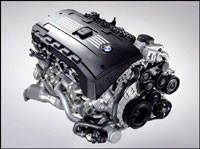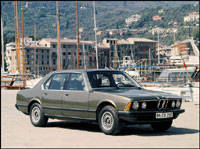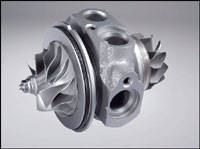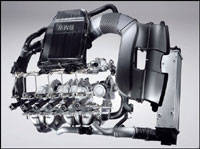Geneva Show Introduction Marks BMW's Return to TurbochargingBMW has just announced an all new, six-cylinder engine, and boy, is
 |
| The N54 engine packs two turbos and direct injection. (Photo: BMW Canada) |
it ever a force to be reckoned with. Normally, the phrase "a force to be reckoned with" is paired to a big V12 with some sort of advanced fuel management mechanism, or a redline-in-the-clouds V10, which coincidentally describes two of BMW's greatest engines in modern times. This said, as fantastic as BMW's ordinary six cylinder engines are, they're just not forces to be reckoned with - that is, unless it's April Fools and we're in a jolly good mood.
But
 |
| The last non-diesel BMW turbo was one of these, a 745i Turbo. (Photo: BMW Canada) |
April Fools is more than a month away, and with all these debuts for Geneva on the way, we're more stressed out than in prank-pulling mode, so, we're being serious when we say that BMW's latest six-cylinder is worthy of your attention. The new engine, codenamed N54, is a twin-turbocharged, Valvetronic-equipped inline six that produces 302-horsepower and 295 lb-ft of torque, making it the first non M-Power gasoline engine to surpass the 100 horsepower per litre mark, though forced aspiration is involved. It's also the first time in twenty-six years that BMW has strapped a turbo on a gasoline-powered car, the last of which, for your information, was the 1980 BMW 745 turbo.
The roots to BMW's latest powerplant come from the aforementioned
 |
| Two, small lightweight turbines like these provide 15 percent more power and 30 percent more torque. (Photo: BMW Canada) |
R6, but it uses a pure alumium block instead of exotic magnesium alloy to deal with higher internal pressures. To that, BMW added two small turbochargers, each powering three cylinders at low boost in order to crank up the output. BMW chose to use two turbochargers instead of the traditional single-unit turbo in order to eliminate pesky lag. With smaller, lighter turbos on board, BMW has also managed to deliver a torque curve that's almost completely flat, also making it one of the most flexible engines that the brand has ever created. The additions of the turbochargers alone have increased horsepower by fifteen percent, while torque has been increased by 30 percent.
But
 |
| 302-horsepower is delivered from just 3.0 litres. (Photo: BMW Canada) |
that's only half the story; the other part of this motoring tale includes the addition of gasoline direct injection in place of the standard fuel injection system. Direct injection is no longer a newfound technology in North America; many vehicles now feature it, including the Pontiac Solstice GXP and any Volkswagen or Audi product bearing the FSI badge. However, what's interesting is that BMW's system utilizes the most modern piezo injectors, similar to those used in its ultra-powerful twin-turbo 535d. This allows the turbo I-6 gas engine to be more efficient and emit fewer emissions while improving power. This advancement fleshes in the rest of the power difference.






